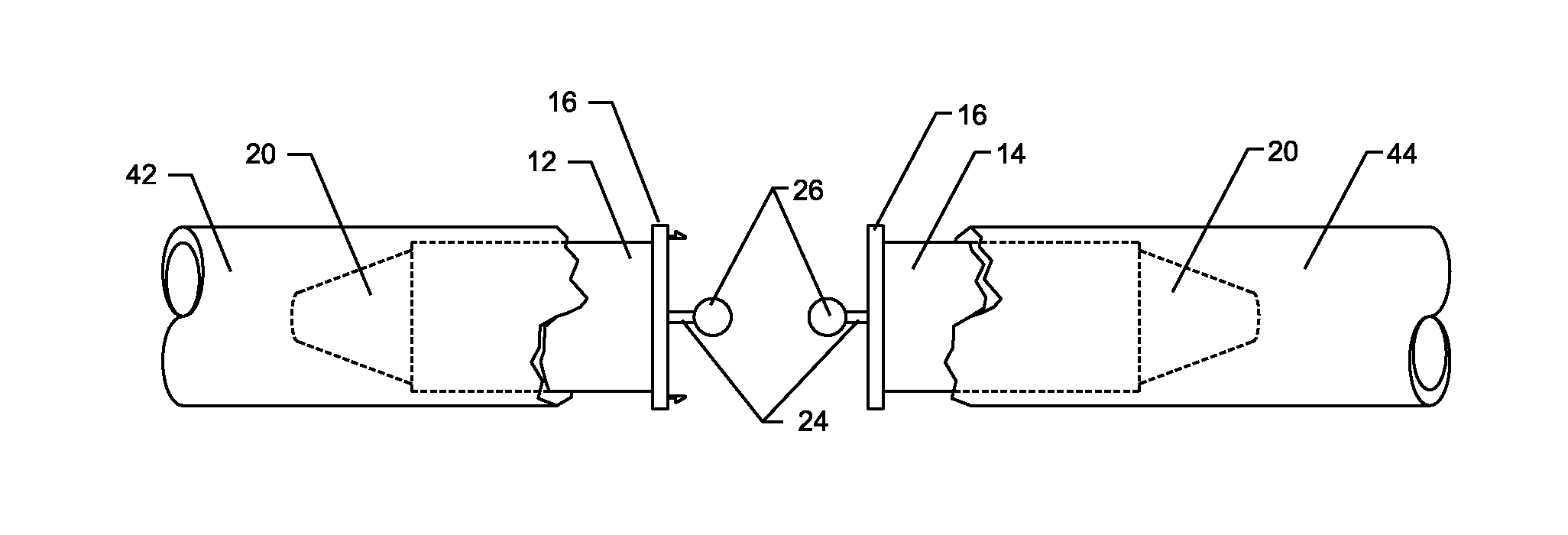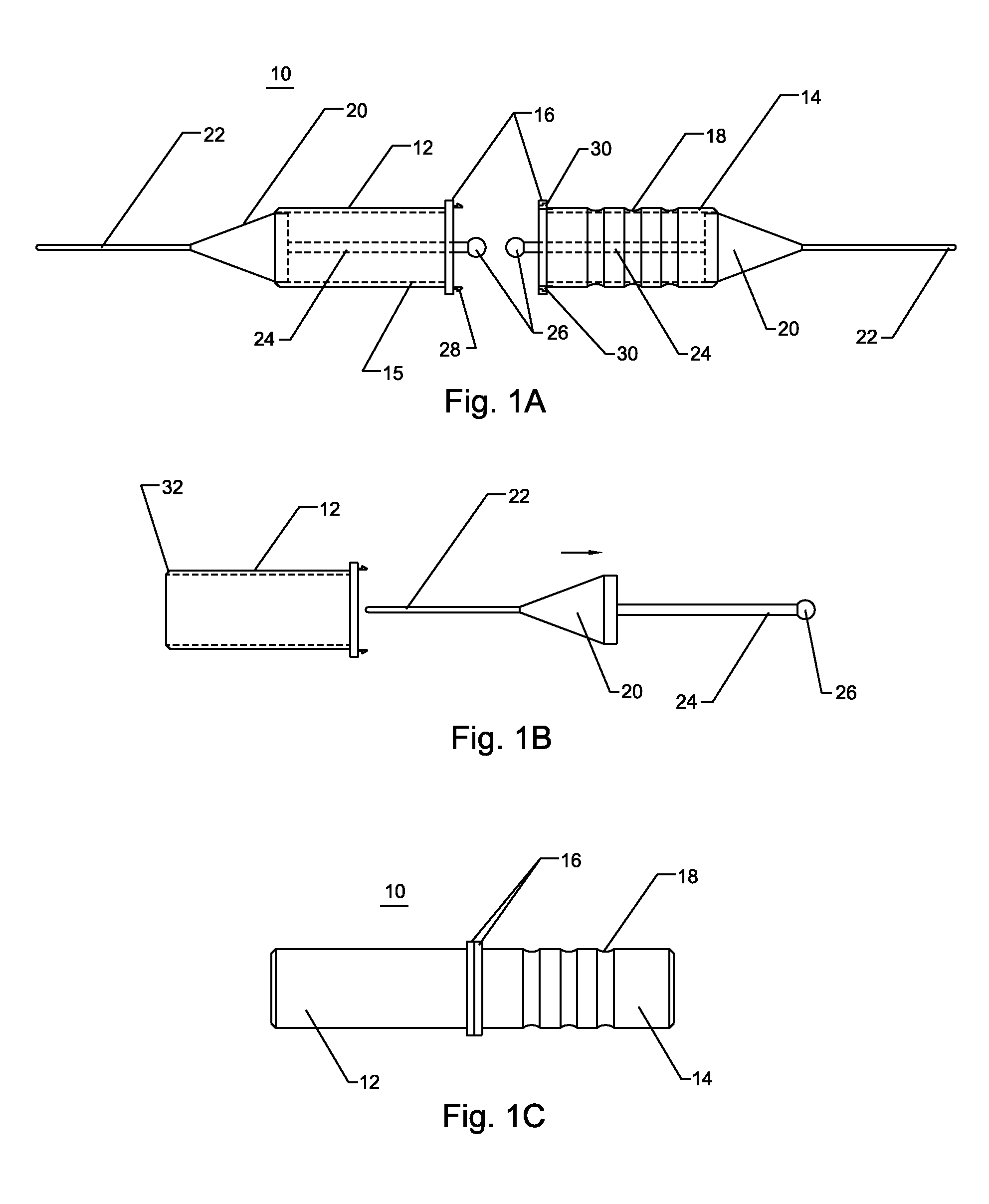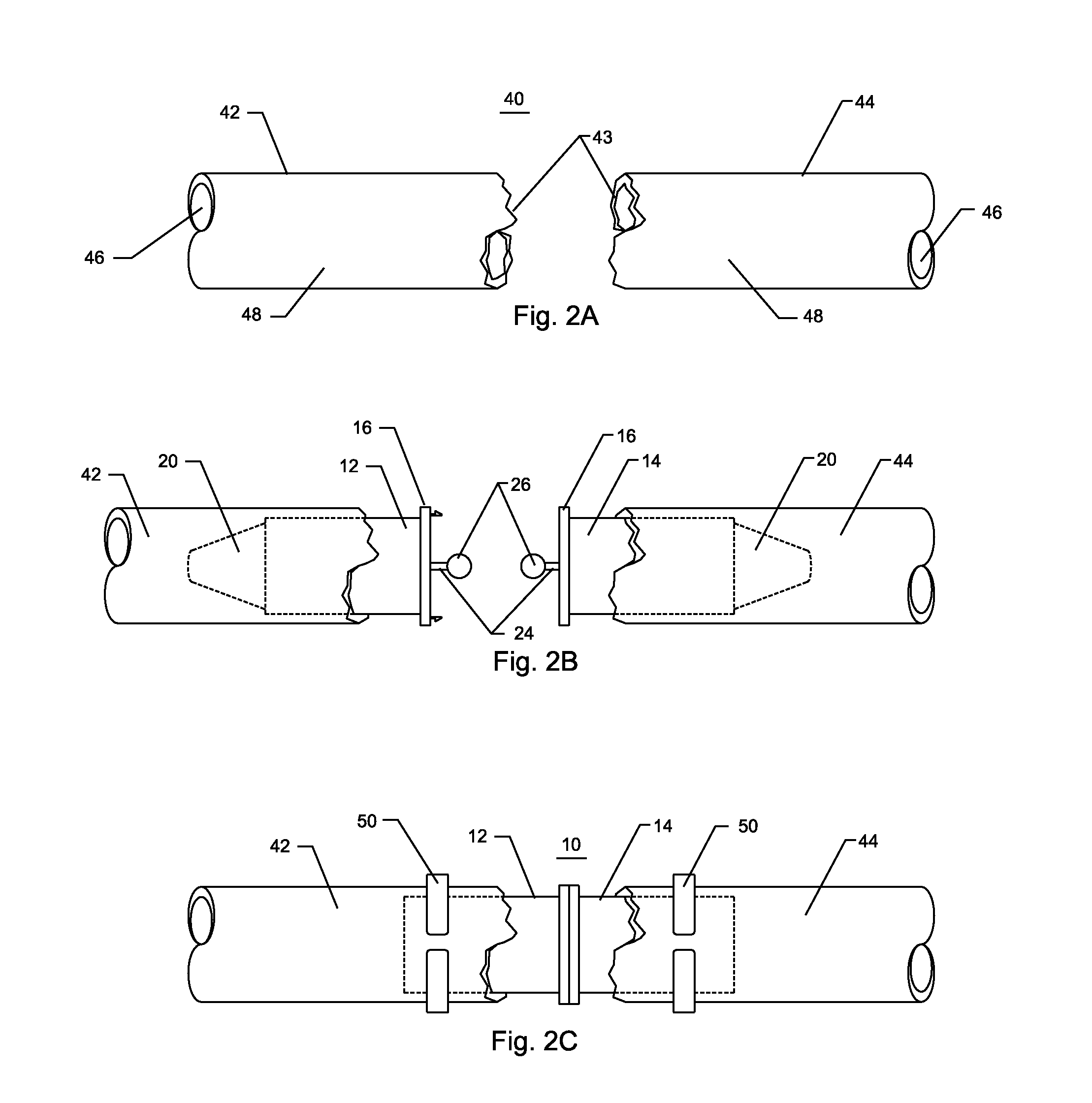Method and device for temporary emergency vessel anastomoses
a technology of emergency vessel and anastomosis, which is applied in the field of treating vascular hemorrhage, can solve the problems of exsanguination and death of patients, severe blood loss, and loss of blood, and achieve the effects of preventing further damage to the vessel, and maintaining hemostasis
- Summary
- Abstract
- Description
- Claims
- Application Information
AI Technical Summary
Benefits of technology
Problems solved by technology
Method used
Image
Examples
Embodiment Construction
[0049]FIG. 1A illustrates a shunt 10 of the present invention comprising an axially elongate left tube 12, an axially elongate right tube 14, a plurality of flanges 16, a plurality of optional friction detents 18, a plurality of obturators 20, a plurality of optional guidewires 22, a plurality of obturator rods 24, a plurality of obturator handles 26, a plurality of locking pins 28, and a plurality of locking recesses 30. The left tube and the right tube further comprise an inner surface 15.
[0050]Referring to FIG. 1A, the left tube 12 and right tube 14 are affixed to the flanges 16. The interior surface 15 of the right tube and the left tube is integral to the left and right tubes, respectively, or it may be adhered to these tubes. The friction detents 18 are depressions or ridges circumferentially disposed on the exterior of the left tube and the right tube. The obturators 20 have a tapered end and a blunt end with the tapered end pointing out of the tubes and at the ends away from...
PUM
 Login to View More
Login to View More Abstract
Description
Claims
Application Information
 Login to View More
Login to View More - R&D
- Intellectual Property
- Life Sciences
- Materials
- Tech Scout
- Unparalleled Data Quality
- Higher Quality Content
- 60% Fewer Hallucinations
Browse by: Latest US Patents, China's latest patents, Technical Efficacy Thesaurus, Application Domain, Technology Topic, Popular Technical Reports.
© 2025 PatSnap. All rights reserved.Legal|Privacy policy|Modern Slavery Act Transparency Statement|Sitemap|About US| Contact US: help@patsnap.com



